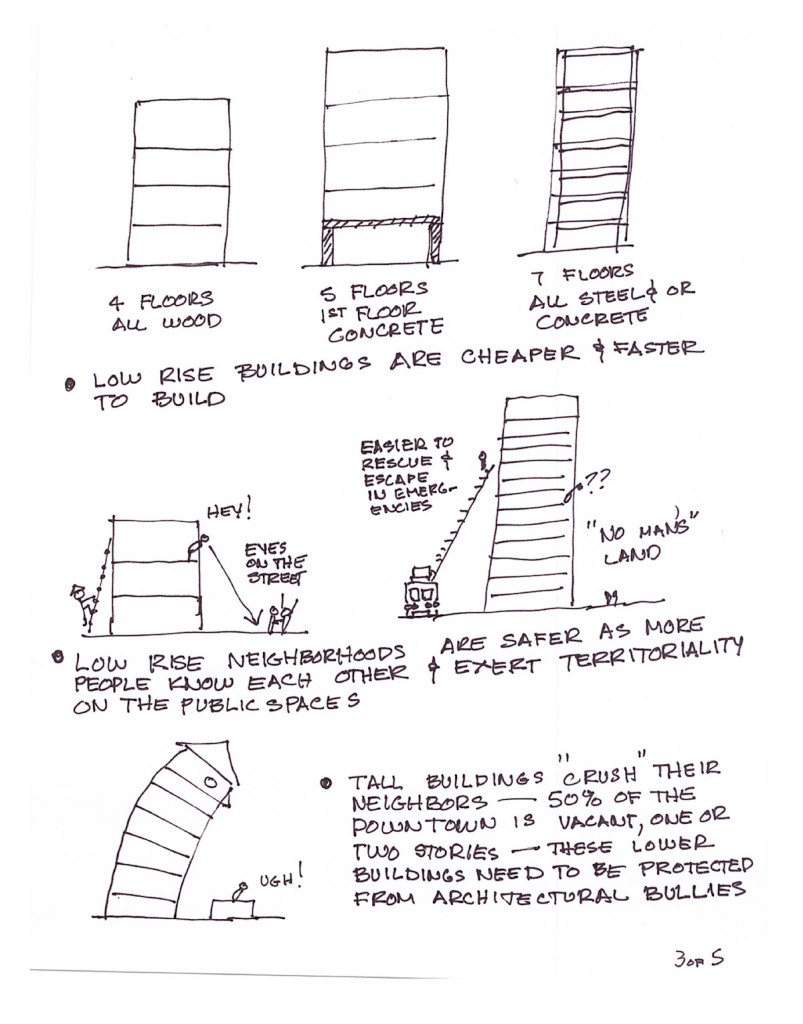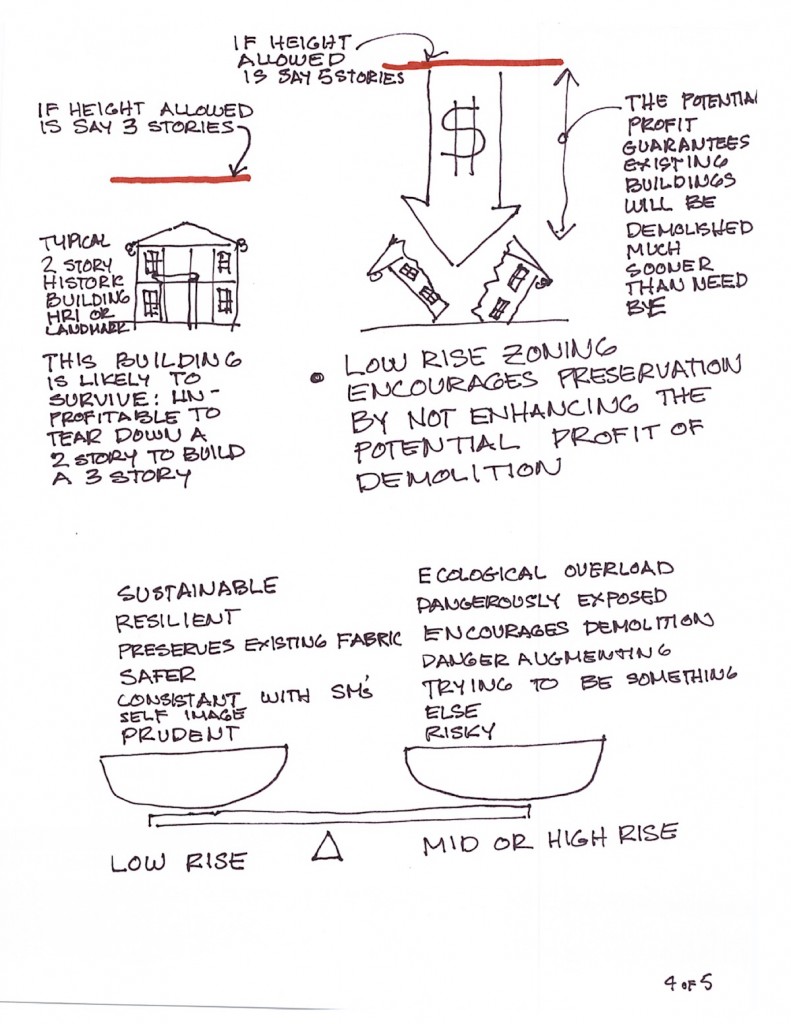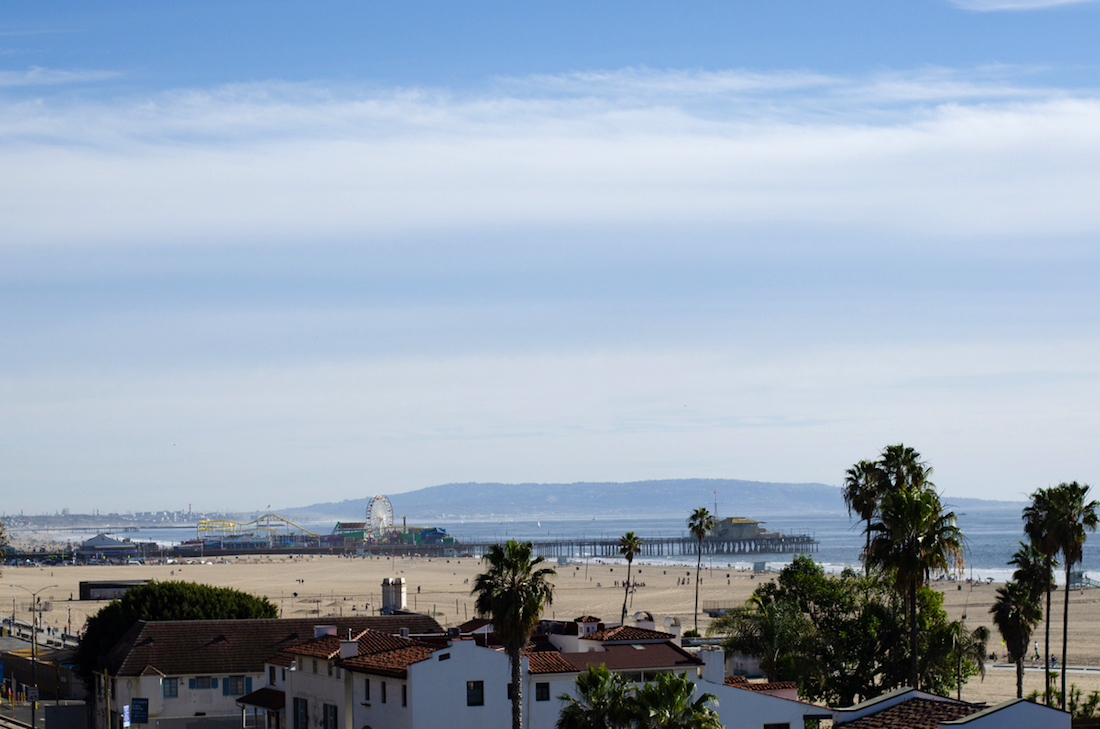Last week we revived our previous discussion, from six years ago, about the notable advantages of a low-rise city composed primarily of buildings no higher than 4 stories. Among the advantages of low-rise buildings previously noted were: 1) their superior ecological sustainability in its many forms 2) their resiliency when cut off from power, 3) their minimal impact on adjacent streets, and 4) their increased access to views, sunlight and natural ventilation. This week we continue to discuss additional advantages of low-rise buildings.
One of the most obvious advantages is that low-rise buildings are cheaper and faster to build than their taller counterparts, primarily because the material costs are much less. The lower cost of construction translates to shorter construction time as well as less disruption to the neighborhood during construction.

Another advantage of lower buildings is that their occupants are able to closely monitor the street and hence exert more “territoriality “on the neighborhood. This makes the streets safer because more eyes on the street discourage crime. It has been shown that occupants living above 6 stories typically have little idea what’s happening at the street level and therefore do not feel as protective of “their street”. Another advantage, in the event of fire, is that it is easier to escape or be rescued from a low-rise building than one that is taller. Obviously, lower buildings’ roof decks and yards have more privacy when they are not dominated by adjacent high rises.
Preservation of existing streetscapes and businesses give a sense of place to a city. When new codes allow heights substantially above the existing urban fabric, it becomes a death sentence for the existing buildings and businesses, since the potential profit of taller construction becomes too tempting for developers to resist. Often when they are rebuilt, the prior businesses and tenants cannot afford the higher rents of the new, more expensive replacement buildings. The result is that they are forced to vacate, further reducing the stability of the neighborhood. Needless to say, this process dooms many historical buildings that might have been excellent candidates for adaptive reuse. It also degrades the livability and ambiance of the existing neighborhoods.

In the final analysis, low-rise buildings consistently out-perform mid- and high-rise buildings in terms of their cost, safety and livability. Thus, they are better for both residents and the city as a whole. Their short term drawback is that they are often less profitable for developers. Ultimately, however, the most important reason to build and maintain our low-rise buildings is that they preserve the City’s character and desirability. Santa Monica residents like their small beachtown ambiance, and would like to keep it that way.
Santa Monica Architects for a Responsible Tomorrow: Mario Fonda-Bonardi AIA, Planning Commissioner; Ron Goldman, Architect FAIA; Daniel Jansenson, Architect, Building & Fire-Life Safety Commissioner; Robert H. Taylor, Architect AIA; Thane Roberts, Architect; Sam Tolkin, Architect; Marc Verville accountant ret.; Michael Jolly, AIRCRE














